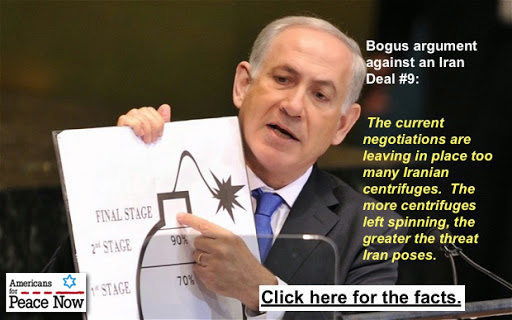 The current negotiations are leaving in place too many Iranian centrifuges. The more
centrifuges left spinning, the greater the threat Iran poses.
The current negotiations are leaving in place too many Iranian centrifuges. The more
centrifuges left spinning, the greater the threat Iran poses.
- Viewed in isolation, the number of centrifuges Iran is allowed to operate under an agreement does not provide a clear measure of breakout time. It thus fails to adequately calculate the threat Iran would pose should it renege on a nuclear deal and shift to a militarized nuclear program.
- To truly measure this threat requires examining the number of centrifuges, the types of centrifuges, and the size of Iran’s stockpile of enriched uranium under an agreement.
- Consistent with the interim deal that gave birth to the current negotiations, Iran has already eliminated its stockpile of 20 percent enriched uranium gas – the feedstock required to produce weapons grade uranium. By doing so, the immediate threat of Iranian “breakout” has been dramatically reduced by, in effect, emptying the cartoon bomb that Israeli Prime Minister Netanyahu displayed at the UN in 2014.
- A nuclear deal with the P5+1 can be expected to significantly reduce and cap the number of centrifuges spinning in Iran. A deal likewise can be expected to limit the type of centrifuges left spinning and to limit Iranian enrichment, such that Netanyahu’s cartoon bomb will not be refilled and such that weapons-grade uranium remains out-of-reach.
- Without an agreement, the number of Iran’s centrifuges can be expected to grow, and the level at which uranium will be enriched can be expected to return to 20 percent, or go even higher.
Click here for our full report covering the 11 most common bogus arguments Israeli Prime Minister Netanyahu and other opponents of an Iran deal are making.